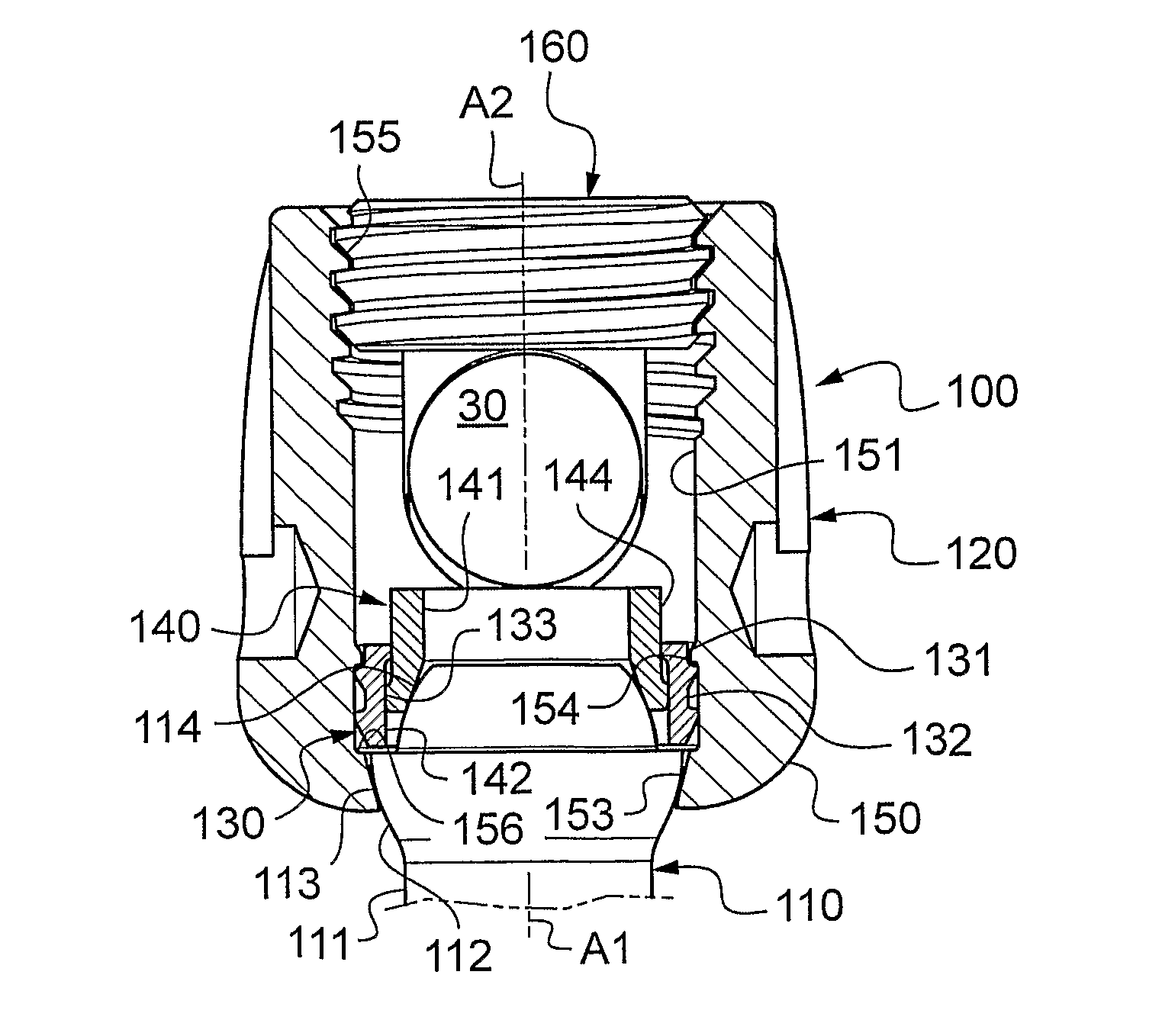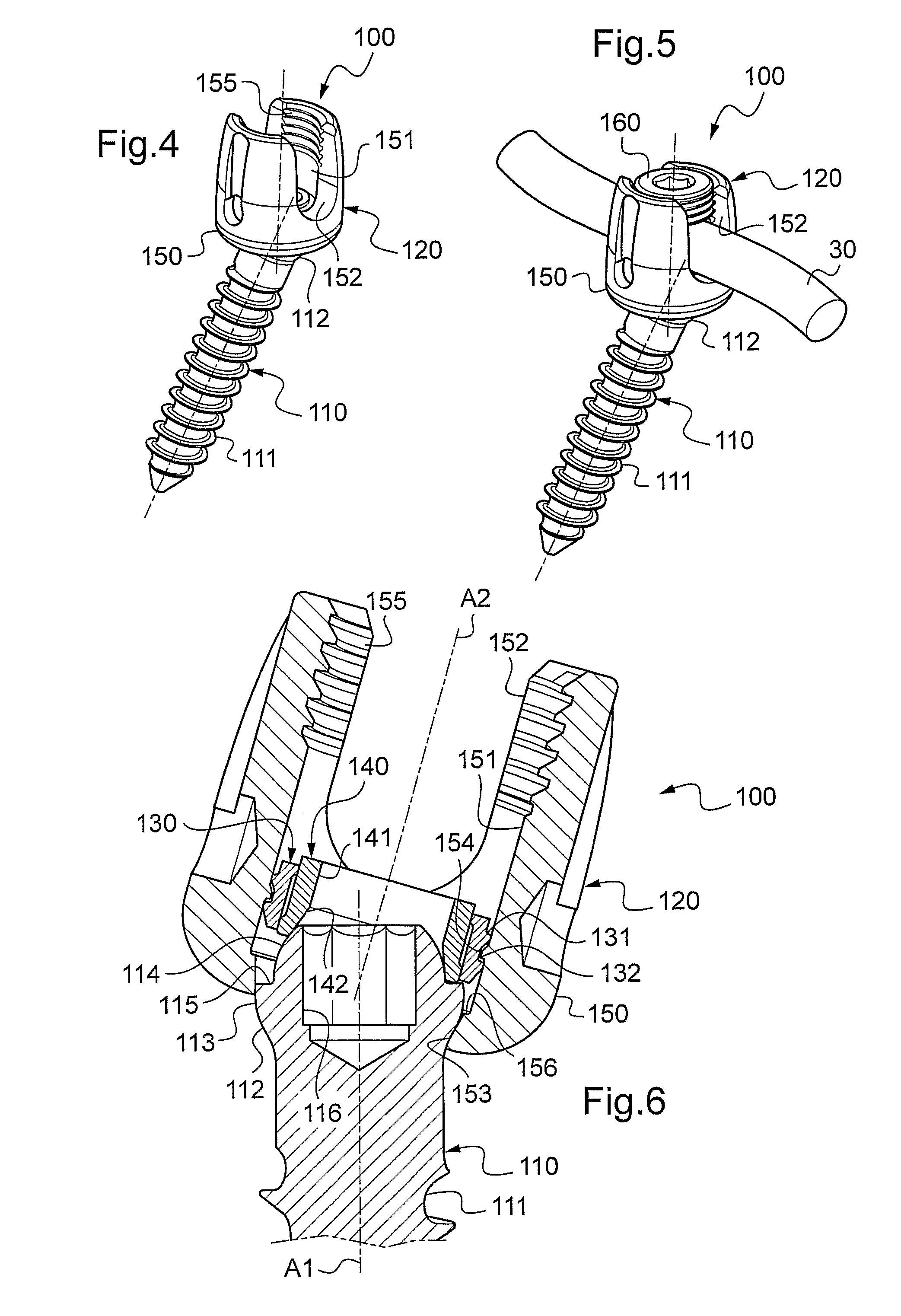Spinal implant with a lockable ball joint
a technology of ball joint and implant, which is applied in the field of spine implants, can solve the problems of surgeons not being able to lock, the ball joint connection cannot be locked, and the implant manufacturer must double the number of product lines, so as to achieve the effect of simplifying the use of the implan
- Summary
- Abstract
- Description
- Claims
- Application Information
AI Technical Summary
Benefits of technology
Problems solved by technology
Method used
Image
Examples
first embodiment
[0056]FIG. 2 is an exploded view of one of the spinal implants from FIG. 1 in the invention;
[0057]FIG. 3 is a view in axial section of the spinal implant from FIG. 2, in which the ball-joint connection is left free;
[0058]FIGS. 4 and 5 are perspective views of the spinal implant from FIG. 3, alone and equipped with a locking screw for the connecting rod;
[0059]FIGS. 6 to 8 are diagrams showing the operation of locking the spinal implant from FIG. 2;
[0060]FIG. 9 is a view in axial section of the spinal implant from FIG. 2 in which the ball-joint connection is locked to provide a pivot connection;
[0061]FIGS. 10 and 11 are perspective views of the spinal implant from FIG. 9, alone and equipped with a locking screw for the connecting rod;
second embodiment
[0062]FIG. 12 is an exploded view of one of the spinal implants from FIG. 1 in the invention;
[0063]FIG. 13 is a perspective view of the spinal implant from FIG. 12 and a locking tool;
[0064]FIG. 14 is a view in axial section of the spinal implant from FIG. 12 in which the ball-joint connection is left free;
[0065]FIG. 15 is a view in axial section of the spinal implant from FIG. 14 and the locking tool in which the ball-joint connection is locked to provide a pivot connection;
third embodiment
[0066]FIG. 16 is an exploded view of one of the spinal implants from FIG. 1 in the invention;
[0067]FIG. 17 is a view in axial section of the spinal implant from FIG. 16 in which the ball-joint connection is left free;
[0068]FIG. 18 is a view in axial section of the spinal implant from FIG. 16 in which the ball-joint connection is locked to provide a pivot connection;
PUM
 Login to View More
Login to View More Abstract
Description
Claims
Application Information
 Login to View More
Login to View More - R&D
- Intellectual Property
- Life Sciences
- Materials
- Tech Scout
- Unparalleled Data Quality
- Higher Quality Content
- 60% Fewer Hallucinations
Browse by: Latest US Patents, China's latest patents, Technical Efficacy Thesaurus, Application Domain, Technology Topic, Popular Technical Reports.
© 2025 PatSnap. All rights reserved.Legal|Privacy policy|Modern Slavery Act Transparency Statement|Sitemap|About US| Contact US: help@patsnap.com



